AWS Certified SysOps Administrator - Associate
Domain 5 Networking and Content Delivery
Internal Network to Network Connectivity With VPC Peering
Welcome back! In this article, we explore how to establish internal network-to-network connectivity using VPC peering. This approach allows you to connect separate Virtual Private Clouds (VPCs) securely—even if they belong to different AWS accounts or regions.
Overview
Network-to-network connectivity by VPC peering involves linking one VPC directly to another. By design, VPCs serve as isolated boundaries within your cloud environment. While you may have distinct VPCs for production and development, there are occasions when these networks need to communicate.
AWS’s Transit Gateway is a robust solution for connecting multiple VPCs. However, VPC peering remains the original and straightforward option to connect two VPCs. Importantly, although our example depicts VPCs in the same region, VPC peering also supports cross-region connectivity. For instance, a VPC in the Tokyo region can seamlessly connect with one in the Virginia region.
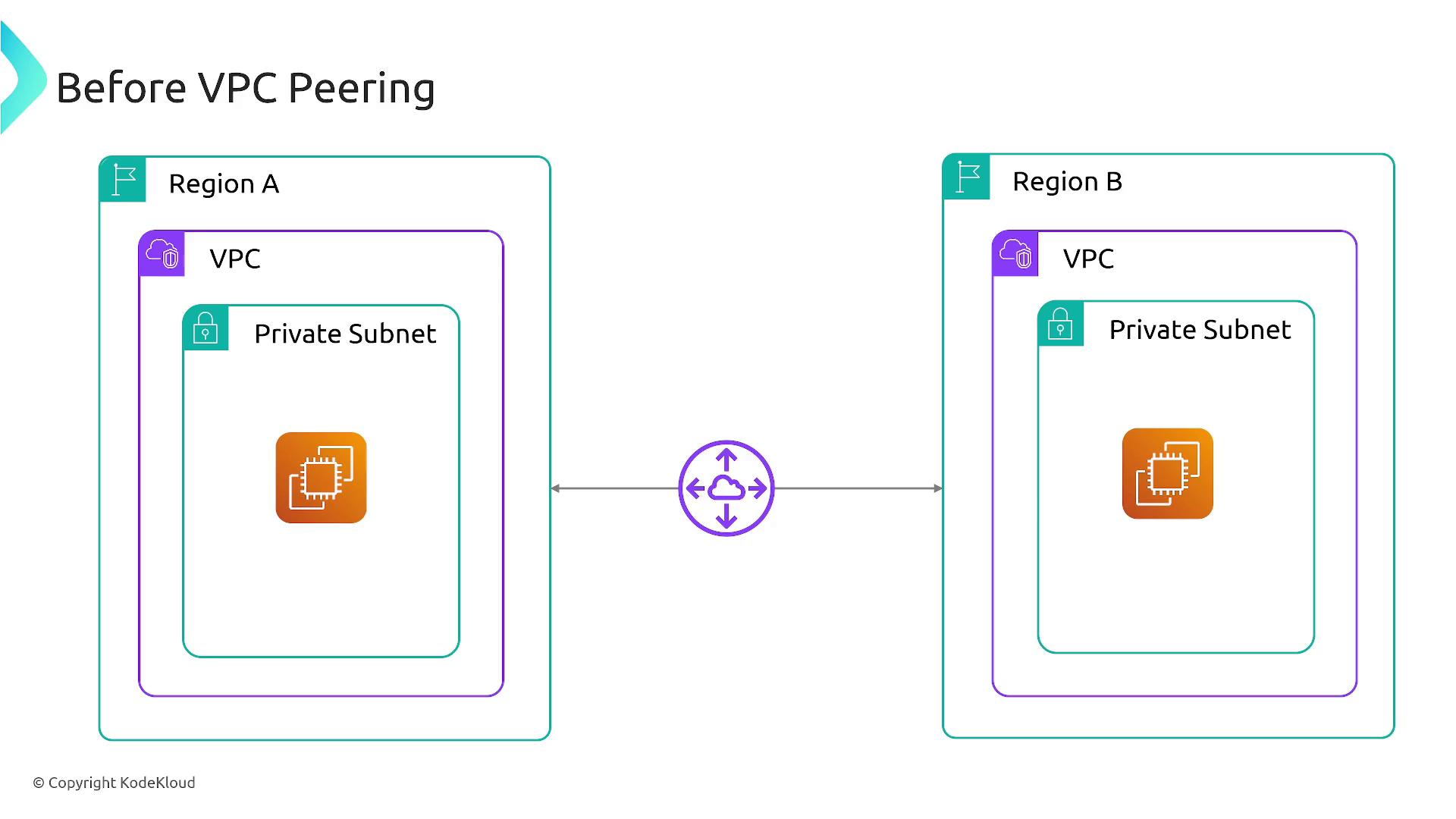
Private Connectivity and Cross-Account Support
VPC peering leverages AWS’s private backbone network, eliminating the need for public connectivity—even when using private subnets. This feature also supports cross-account connections, enabling you to connect VPCs owned by different AWS accounts as well as those in different regions.
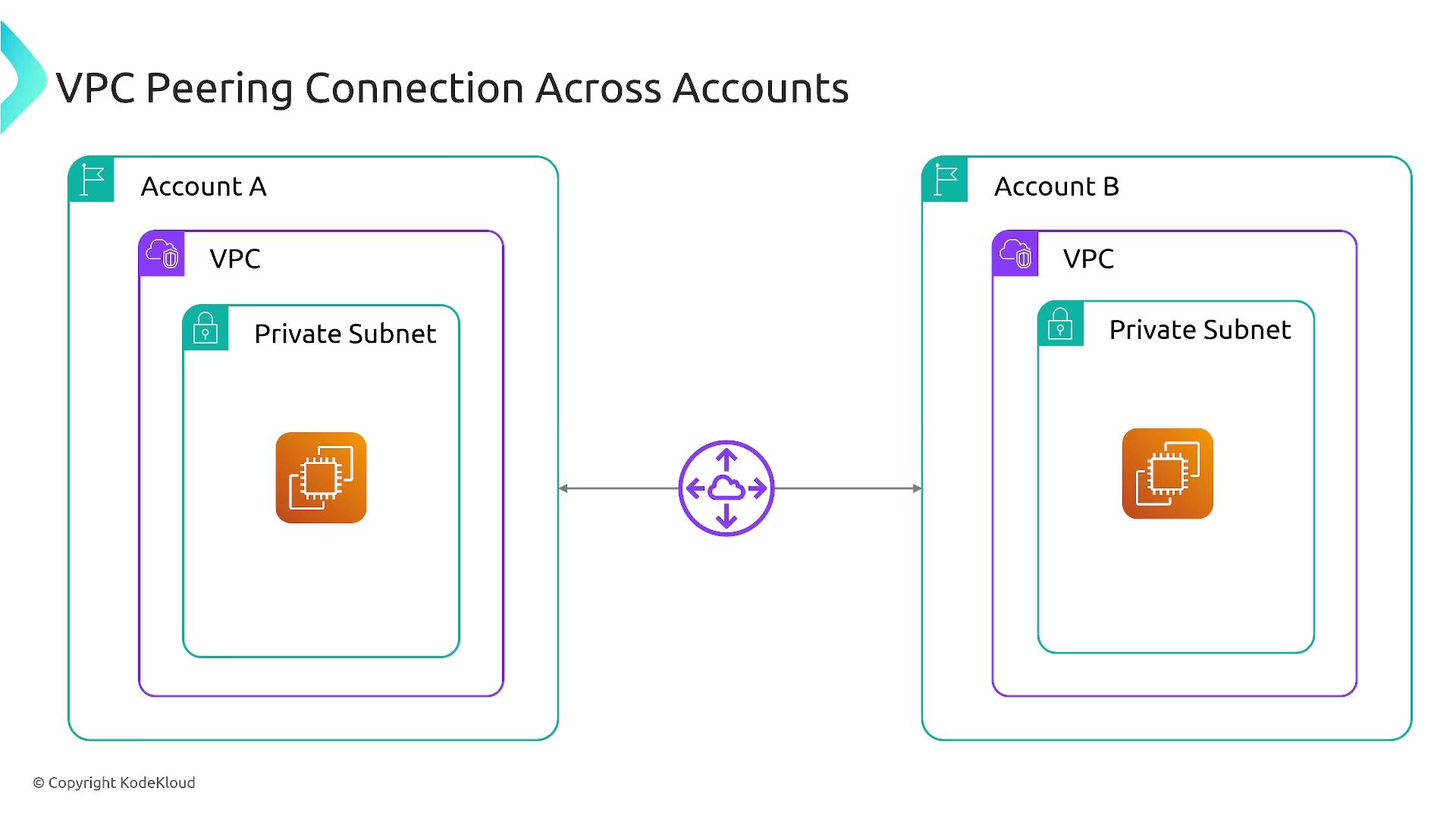
VPC Peering vs. Transit Gateway
VPC peering provides a one-to-one connection, meaning if VPC A is peered with VPC B and VPC C, there is no transitive routing between B and C through A. For scenarios that require connecting multiple VPCs or transitive connectivity, AWS Transit Gateway may be a more flexible solution.
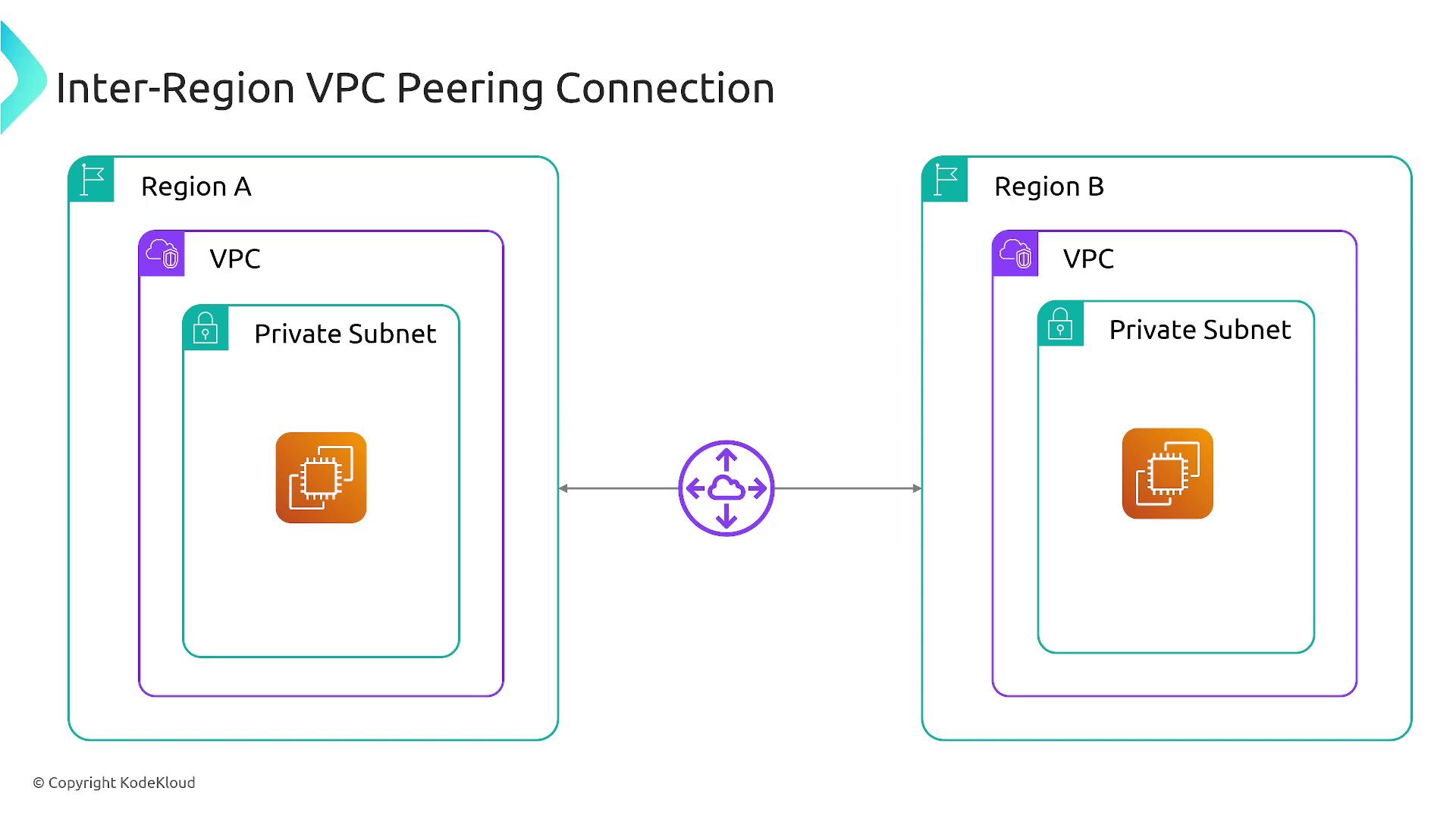
How VPC Peering Works
Establishing a VPC peering connection involves the following steps:
- The owner of a VPC initiates a peering request to the target VPC.
- AWS notifies both parties via email and the AWS Management Console that a peering request is pending.
- Once the target VPC accepts the request, update the route tables on both VPCs to enable direct communication.
Tip
Ensure that the IP address ranges (CIDR blocks) of the peered VPCs do not overlap. For example:
- Two VPCs configured with /16 CIDR blocks (like 10.10.0.0/16) would conflict.
- Using distinct CIDR blocks (such as 10.10.0.0/24 and 10.10.1.0/24) avoids conflicts. For IPv6, overlapping is typically not an issue since every address is unique.
Once initiated, the peering request status is "pending acceptance." The request may eventually expire or be rejected. After acceptance, the connection status turns "active" and the route tables must be updated accordingly.
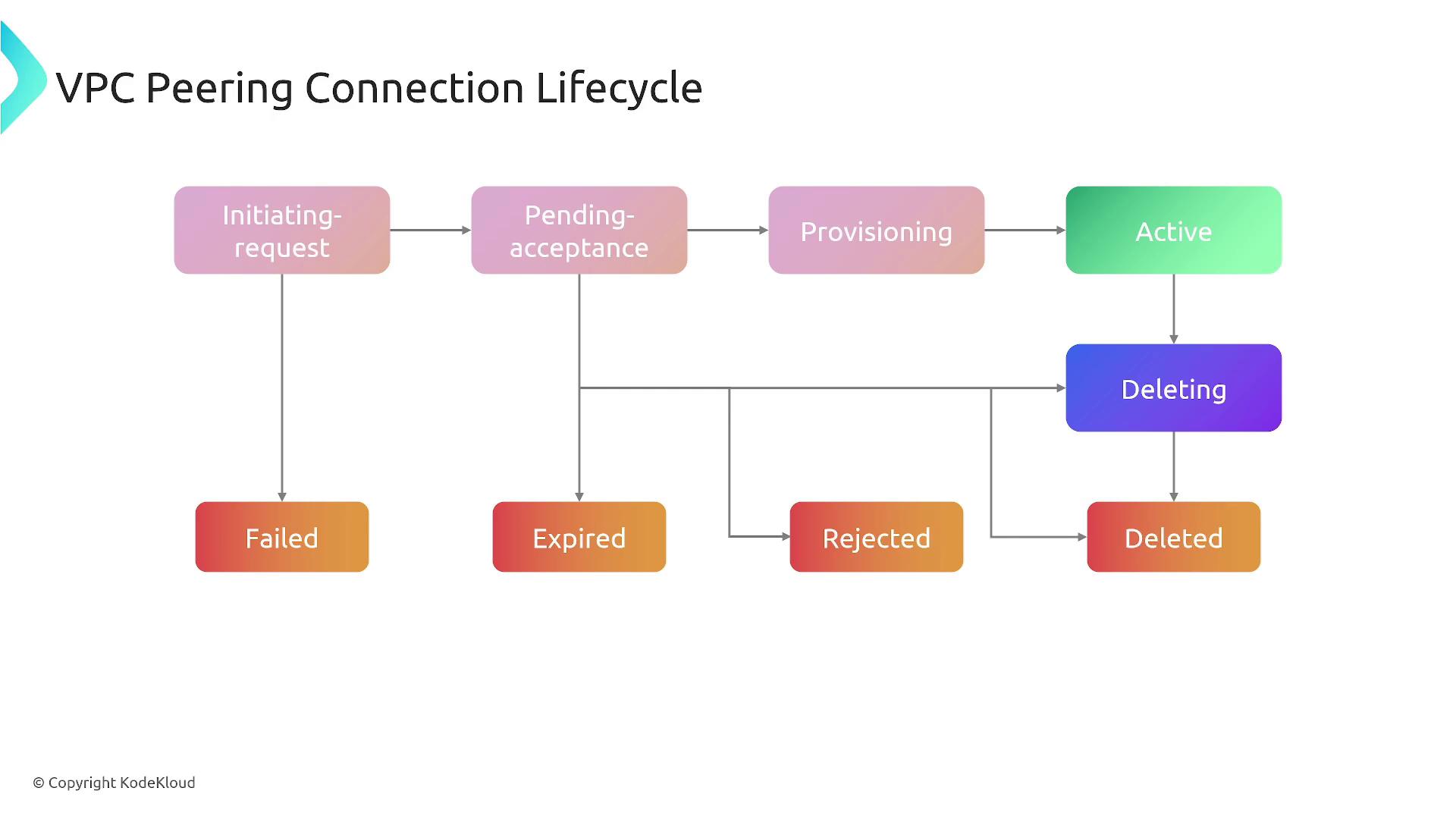
Important Considerations
Non-transitive Nature:
VPC peering is strictly one-to-one. Even if VPC A is peered with both VPC B and VPC C, B and C cannot communicate through A. A direct peering connection is needed for those VPCs to interact.IP Address Overlap:
Always check that the CIDR blocks of the peered VPCs do not overlap—overlapping addresses prevent proper routing between networks.No Edge Routing:
VPC peering does not support edge routing. Unlike Transit Gateway, which provides advanced routing features, VPC peering requires manual updating of each VPC's route table.Latency Considerations:
When peering VPCs across regions, even though connections use AWS’s backbone, the physical distance may introduce latency. This could affect performance in high-traffic scenarios.
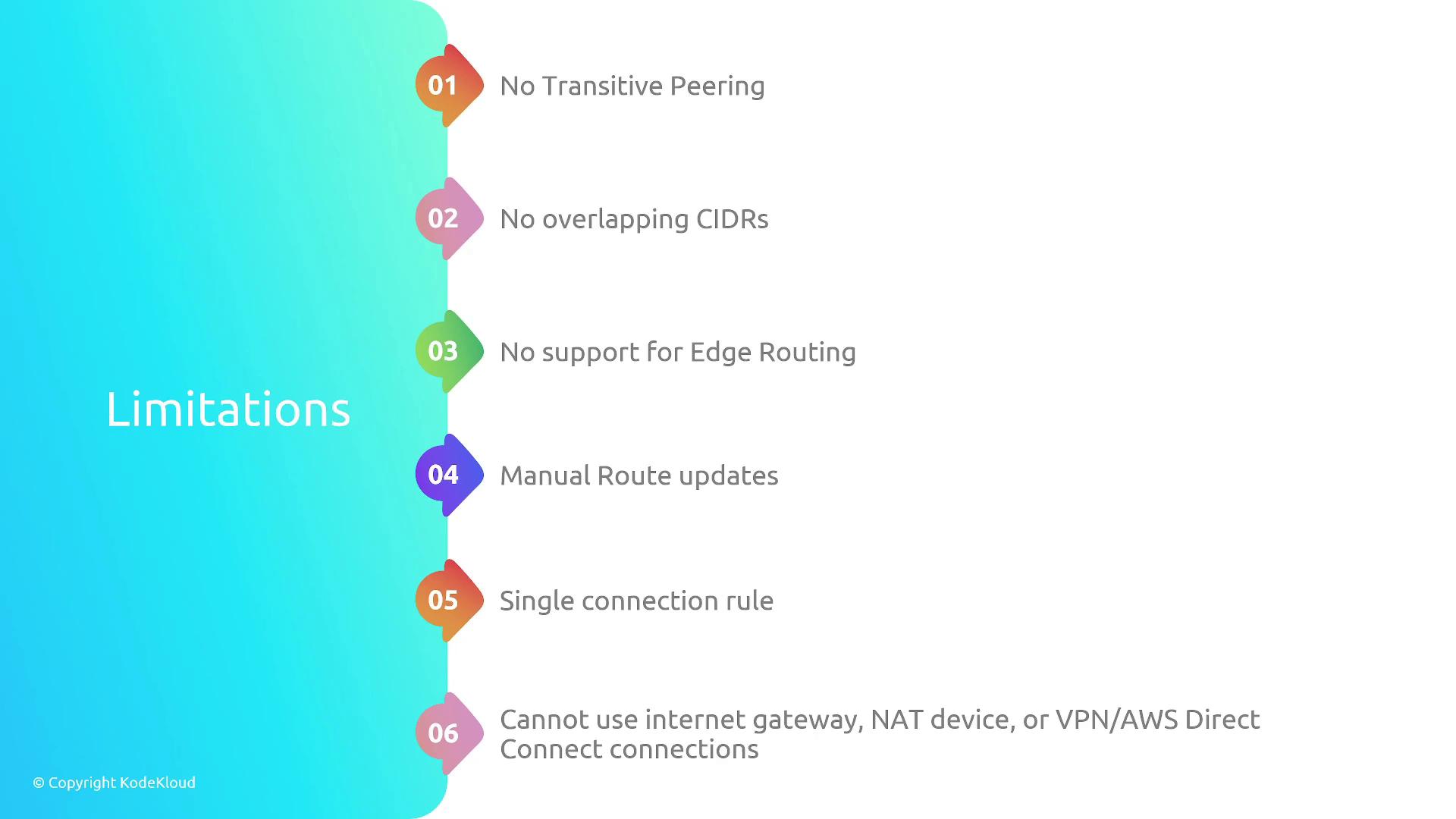
Summary
VPC peering offers a straightforward and secure way to directly connect two VPCs—whether they reside within the same region or across multiple regions or accounts. Remember that the connection must be initiated and accepted, and route tables require manual updates to enable communication. Always ensure that the IP ranges between VPCs do not overlap, and keep in mind that peering is inherently a point-to-point connection without transitive routing.
We hope this article has provided you with a clear understanding of VPC peering and its capabilities. Stay tuned for more insights on cloud network configurations and best practices in our upcoming articles.
Watch Video
Watch video content